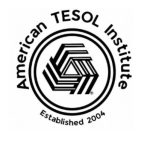The world of language learning is evolving rapidly, and with the advent of sophisticated AI tools, TESOL teachers have an unprecedented opportunity to engage students in exciting and effective ways. AI can personalize learning, provide instant feedback, and offer diverse learning resources, making language acquisition more accessible and enjoyable.
How AI Can Enhance TESOL:
- Personalized Learning: AI can analyze student performance and tailor lessons to their individual needs and learning styles. This individualized approach ensures that students are challenged appropriately and receive targeted support.
- Instant Feedback: AI-powered tools can provide immediate feedback on pronunciation, grammar, and vocabulary, allowing students to identify and correct errors in real-time.
- Interactive Exercises: AI can create engaging interactive exercises, such as quizzes, games, and simulations, that make language learning fun and motivating.
- Diverse Learning Resources: AI can provide access to a vast library of authentic materials, including articles, videos, and podcasts, exposing students to diverse accents and cultural contexts.
- 24/7 Availability: AI-powered language learning platforms are available anytime, anywhere, allowing students to learn at their own pace and convenience.
AI-Powered Tools for TESOL:
- Duolingo: This popular app uses AI to personalize lessons and provide instant feedback on a variety of language skills.
- Grammarly: This writing assistant uses AI to identify and correct grammatical errors, improve clarity, and enhance writing style.
- Google Translate: This tool can translate text and speech in real-time, facilitating communication and comprehension.
- Speechify: This app uses AI to convert text to speech, allowing students to listen to articles, books, and other learning materials.
- Otter.ai: This tool can transcribe audio and video recordings, making it easier for students to review and analyze spoken language.
Prompts for AI-Powered Language Learning:
Speaking:
- “Describe your favorite hobby to the AI and ask it for feedback on your pronunciation and fluency.”
- “Have a conversation with the AI about a current event or a topic of interest.”
- “Use the AI to practice giving a presentation or speech.”
Writing:
- “Write a short story or essay and ask the AI to provide feedback on your grammar and vocabulary.”
- “Use the AI to generate ideas for writing prompts or creative writing exercises.”
- “Translate a piece of text from your native language to English and ask the AI to evaluate the accuracy and fluency of your translation.”
Listening:
- “Listen to a podcast or news report and use the AI to generate a summary or identify key vocabulary.”
- “Watch a movie or TV show with subtitles and ask the AI to explain unfamiliar words or phrases.”
- “Practice listening comprehension by asking the AI to dictate sentences or paragraphs for you to transcribe.”
Reading:
- “Read an article or story and ask the AI to generate comprehension questions or summarize the main points.”
- “Use the AI to find articles or books on a topic of interest and practice reading comprehension.”
- “Translate a piece of text from English to your native language and ask the AI to evaluate the accuracy and fluency of your translation.”
Conclusion:
AI is revolutionizing the way we learn and teach languages. By embracing these powerful tools, TESOL teachers can create engaging, personalized, and effective learning experiences that empower students to achieve fluency and cultural understanding. So, dive into the world of AI and unlock the full potential of your TESOL classroom!


